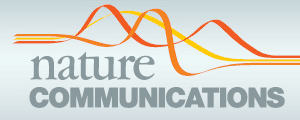CICS Researchers Part of Team that Develops Theory and First Demonstration of Covert Optical Communications

Encryption of a message to make it undecipherable to an unintended observer is often the goal of modern security research. But what if the mere presence of the message is enough to compromise the security of the transmitting and receiver parties? Then, the detection of the presence of a transmission, even if that observer cannot decode the message due to encryption, can be highly problematic. For example, an authoritarian government is not going to allow encrypted messages to go between potentially 'dangerous' parties. The only alternative is to make sure that the observer is not aware of the transmission in the first place.
Boulat Bash, a recently graduated Ph.D. student from the College of Information & Computer Sciences Professor Dennis Goeckel of the College of Engineering, and Professor Donald Towsley of the College of Information and Computer Sciences are members of the multi-institutional team of seven researchers that recently developed the theory of covert (private) communications and demonstrated it experimentally in optical communications. This work is reported in Nature Communications. The title of the article is "Quantum-secure covert communication on bosonic channels," published in the October 19, 2015, issue of the journal: http://www.nature.com/ncomms/2015/151019/ncomms9626/abs/ncomms9626.html.
The research described in Nature Communications adds critical information to the increasingly important effort to prevent unauthorized access to transmitted communications by exploring covert communications, which the authors define as the transmission of information without detection by a watchful adversary. As Prof. Goeckel notes, "Both parties that are trying to communicate and those trying to stop such communications obviously have great interest in this National Science Foundation funded project, which focuses on the fundamental limits on the amount of information that can be transmitted without detection." "One beauty of this work" notes Prof. Towsley, "is that it not only attacks an important societal problem but it also opens up a new area of information theory. Already numerous research groups are focusing on the implications of our results and generalizing them to a greater variety of systems. We find this very exciting."
In addition to Bash'15 Ph.D. (now at Raytheon BBN Technologies), Goeckel and Towsley, the other members of the team are: Andrei H. Gheorghe, Monika Patel, Jonathan L. Habif, and Saikat Guha of the Quantum Information Processing Group, Raytheon BBN Technologies, in Cambridge, Massachusetts.
As the researchers explain in their Nature Communications article, which extends their previous work to the optical communications domain where quantum mechanical considerations must be taken into consideration, "Computational encryption, information-theoretic secrecy, and quantum cryptography offer progressively stronger security against unauthorized decoding of messages contained in communication transmissions. However, these approaches do not ensure stealth--that the mere presence of message-bearing transmissions be undetectable."
In that context, this article characterizes the ultimate limit of the amount of data that can be communicated in a covert and reliable way over an optical channel that models a range of practical communication channels now in use.
As the article notes, "We show that whenever there is some channel noise that cannot in principle be controlled by an otherwise arbitrarily powerful adversary--for example, thermal noise from blackbody radiation--the number of reliably transmissible covert bits is at most proportional to the square root of the number of orthogonal modes (the time-bandwidth product) available in the transmission interval."
The research group corroborated its theoretical results with a proof-of-concept experiment done at 1.55 mm.
"We thus demonstrate a truly information-theoretically secure covert communication system that allows communication when all transmissions are prohibited," the researchers explain. "Finally, we employ a realistic model of loss and noise in atmospheric propagation to calculate the achievable volume of data transmissible covertly over a 1-km-range line-of-sight channel as a function of the transmission wavelength and the transceiver contact duration, where the covertness solely relies on the minimum amount of thermal noise that must arise from blackbody and solar radiation at the operating temperature and wavelength."
As the researchers conclude, "Our analysis provides evidence for optimality of long-wave infrared wavelengths for quantum-secure covert communication." (November 2015)
(Source: UMass Amherst College of Engineering)